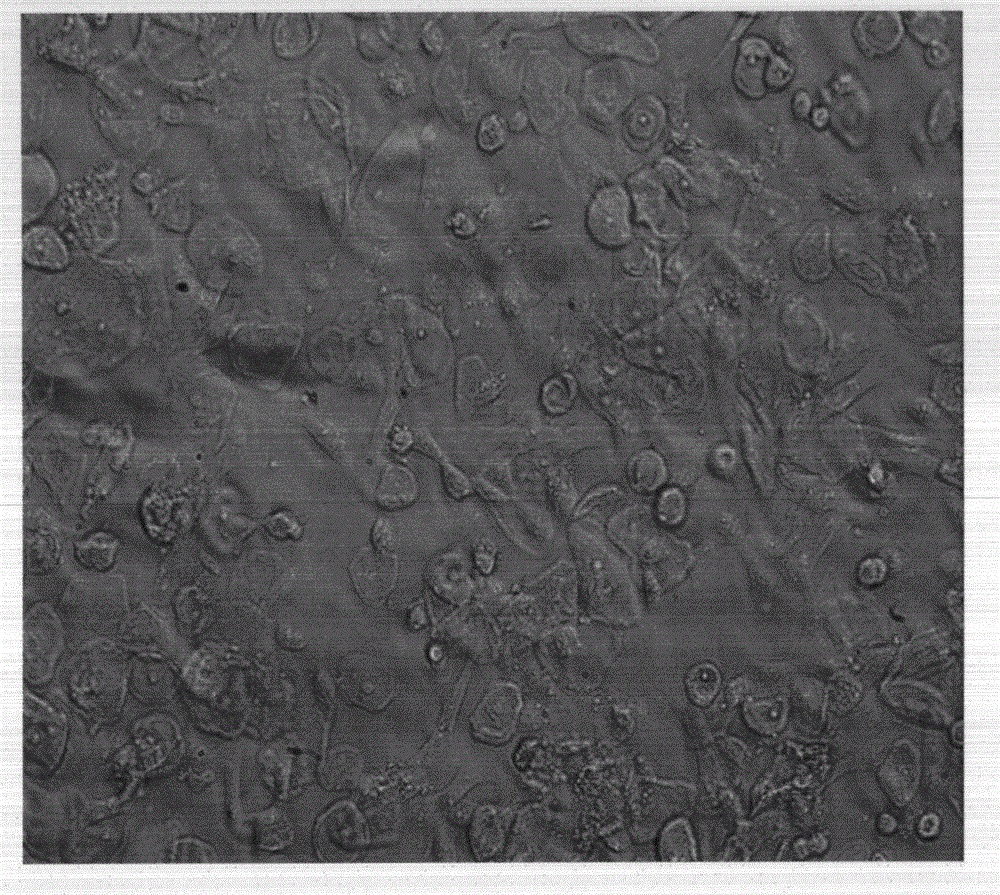Construction of down's syndrome cell model and cell bank of down's syndrome cell by employing hTERT gene recombination
A technique for Down syndrome and genetic recombination, applied in the direction of combinatorial chemistry, recombinant DNA technology, and cells modified by introducing foreign genetic material, etc., can solve problems such as the inability to carry out research, and achieve normal differentiation, non-tumorogenicity, and maintenance Chromosomal Effects
- Summary
- Abstract
- Description
- Claims
- Application Information
AI Technical Summary
Problems solved by technology
Method used
Image
Examples
Embodiment Construction
[0016] 1. Extraction of hTERT: ① Digestion of pClneo-hTERT: hTERT is located between the EcoRI and SalI sites of the plasmid pClneo-hTERT, and the multiple cloning site (MCS) of the pLXSNneo vector contains EcoRI and XhoI restriction sites. Commercially purchased pCIneo-hTERT plasmid, dissolved in an appropriate amount of ultra-clean H 2 In O or TE buffer, add 2uL 10× digestion buffer and 18uL H 2 O, add restriction endonuclease EcoR I and Xho I 0.5ul each, incubate at 37°C for 1h, heat at 75°C for 15min, inactivate the enzyme, add 5uL electrophoresis loading buffer (also by adding 0.5mol / L EDTA) The reaction was terminated, and hTERT was amplified according to the conventional PCR method, and the amplified product was collected for electrophoresis. ②hTERT electrophoresis: Take electrophoresis grade agarose and use electrophoresis buffer to make 10% agarose gel, pour it into the sealed gel filling platform, insert the sample comb, and remove the sealing tape from the gel maki...
PUM
 Login to View More
Login to View More Abstract
Description
Claims
Application Information
 Login to View More
Login to View More - R&D
- Intellectual Property
- Life Sciences
- Materials
- Tech Scout
- Unparalleled Data Quality
- Higher Quality Content
- 60% Fewer Hallucinations
Browse by: Latest US Patents, China's latest patents, Technical Efficacy Thesaurus, Application Domain, Technology Topic, Popular Technical Reports.
© 2025 PatSnap. All rights reserved.Legal|Privacy policy|Modern Slavery Act Transparency Statement|Sitemap|About US| Contact US: help@patsnap.com

